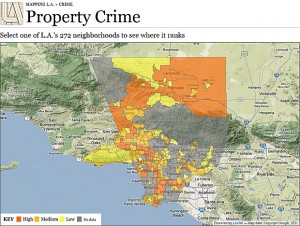My definition of data journalism, is journalism driven by good storytelling, which is interactive, visual and involving data. Not every story is going to be data driven, but most should have some component of data involved to pull in readers.
If you want to create a data driven story, it is best to start with a long term project.
The Data Journalism Handbook explains how to layout long-term data driven projects, which will last.
1. The data project don’t date: This means depending on the design, new material can be added to data journalism stories. They don’t only have to be for users, but can be used internally for reporting and analysis.
The Los Angeles Times has done this with their data driven project called L.A. Crime Maps. The project maps out crimes in certain areas; lists kinds of crimes; dates; and stories, which go along with the crime. This is updated and used internally to write more in depth stories about the kinds of trends in crimes in certain areas.
They even have a team called The Data Desk who creates data driven stories for the newspaper.
2. You can build on your past work: When undertaking a data project you will create bits of code which can be reused or update.
The New York Times has done this with most of their interactive projects. Their team has created a template to tell great interactive stories. This template looks like one page where readers scroll down, watch videos and sound slideshows.
Their most recent interactive story is about the 786 women who attend West Point.
3. Data journalism pays for itself: data driven projects are cheaper than traditional marketing campaigns. A executed data project will normally generate a lot of clicks and buzz , and may go viral.
A perfect example of this is NPR’s Planet Money: Make A T-Shirt, an investigation on the hidden world behind clothes sold in this country.
Planet Money team decided to make an ordinary shirt like the vast majority of the shirts sold in this country — not organic cotton, not hand-sewn in the United States. To figure out how many shirts to make, and to raise money to pay for them, they turned to Kickstarter. Their goal was to sell 2,000 shirts. In the end, they sold 25,000. What was shocking is people gave their money to produce this story.
This project showed, like many others, people are willing to pay for good content. You have to be willing to provide it.
I know people are hungry for strong data driven stories. Don’t get me wrong, not every story is going to be data driven, but I believe journalism is headed toward this direction and people are willing to pay for it.

